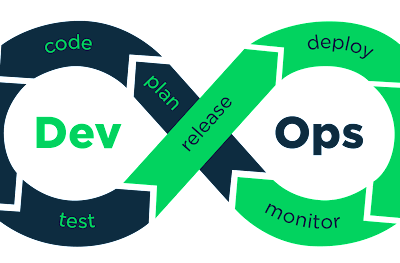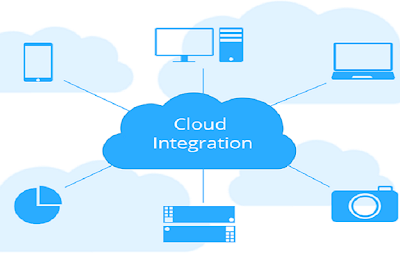The cloud computing method is pervasive these days. Every business is using cloud computing approaches for data storage, disaster recovery, software development, testing, big data analytics, virtual desktops, software delivery, and web applications. All types of enterprises, large and small, are migrating to cloud-based services. The use of both public and private clouds has grown in recent years.
This change is motivated by decreased operational costs and more flexibility. Rather than having a local infrastructure, cloud computing technology uses remote servers to store, manage, and access data through the internet. Cloud computing components are essential for smooth and successful operations. So, I have listed 8 cloud computing components that you must know.
What is Cloud Computing Architecture?
Cloud computing can be used to create new apps and services, store and backup data, run blogs and websites, analyze data, and broadcast music and video. There is no need for a big and sophisticated cloud computing infrastructure.
Because storage and processing are handled by remote servers known as cloud servers. A Cloud Computing Architecture is a collection of components necessary for a Cloud Computing service.
A cloud computing architecture is made up of numerous components, including a frontend platform, a backend platform or servers, a network or Internet service, and a cloud-based delivery service. Cloud computing has two components: the front end and the back end.
The client component of a cloud computing system makes up the front end. It consists of the interfaces and applications needed to access the Cloud computing or Cloud programming platform.
Top 8 Components of Cloud Computing:
Storage as a Service:
The storage component of cloud computing provides storage capacity on the cloud for storing and managing data. Data stored in the cloud can be accessed by several clients at the same time. There are three types of cloud storage: public cloud, private cloud, and hybrid cloud.

This is the component where we may utilize or request storage, similar to how we do it physically with the distant site. It is also known as disc space on demand. This is the primary component, with Storage-as-a-Service serving as the foundation for all other components.
Clients:
The client infrastructure component is a portion of the frontend that offers a graphical user interface for the user to communicate with the cloud. Clients in cloud computing are often familiar with the operation of Local Area Networks (LANs).

They are just the desktops that have a place on desks. These might potentially take the shape of computers, mobile phones, or tablets to improve mobility. Clients bear the obligation for interaction, which pushes for data management on cloud servers.
Database as a Service:
Database as a service (DBaaS) is a cloud computing managed service solution that enables access to a database without the requirement for physical hardware setup, software installation, or database configuration. It combines self-service/on-demand database consumption with operation automation.

This component works as a live database from the distance, and its functionality and other features operate as if a real database is present in the local system. Its primary goal is to minimize the cost of DB by utilizing a variety of software and hardware.
Client Infrastructure:
Client infrastructure is a component of the front end. It has a graphical user interface (GUI) that allows you to communicate with the cloud. Any software or platform that a client wishes to access may be considered an application. A Cloud Service handles which sort of service you access based on the needs of the client.

The client infrastructure component is the element of the frontend that provides the user with a graphical user interface for interacting with the cloud. It includes the apps and user interfaces needed to connect to the cloud platform.
Application as a Service:
The transmission of computer software applications as a service through the Internet is referred to as applications as a service. This sort of software is also known as SaaS (Software as a Service), on-demand software, and on-demand software.
Because of the cost savings and efficiency advantages it may provide to enterprises of all sizes, on-demand software is earning a larger proportion of the software industry.

On-demand software saves businesses money by removing the need for individual user licenses, which are often associated with traditional on-premise software delivery. Because it can be distributed and maintained for all users in a single place – the public cloud – applications as a service may also supply software to business users more efficiently (Internet).
Security:
Data security is the most vexing issue for every firm these days. Cybercrime is an easy way to undermine an organization’s protected information and brand image. To avoid these breaches, cloud computing provides a number of security features that assure data preservation and administration. This ensures that stronger authentication, encryption, and access control are available for data security.

Security is the backend component of cloud computing that ensures data security in the cloud. The cloud security system consists of a diverse combination of rules, technologies, applications, and controls needed to safeguard intellectual property, data, applications, infrastructure, and cloud computing services. Backend security provides several security techniques to protect Cloud systems, resources, information, and infrastructure.
Integration as a Service:
Integration as a Service (IaaS) is a cloud-based delivery model that aims to integrate data on-premise with data in cloud-based applications. This paradigm enables real-time data and program interchange between enterprise-wide systems and trading partners. IaaS enables partners to design, maintain, and manage bespoke integrations for various systems and applications in the cloud in business-to-business (B2B) integration.

As a result, the organization may pursue process innovations more efficiently without having to continually adapt and manage numerous and frequently incompatible application applications. IaaS providers often supply infrastructure, such as servers, as well as middleware. Customers will often be provided the tools to create, test, deploy, and manage cloud apps by vendors.
Distributed Servers:
A distributed cloud is a public cloud computing service that allows you to host public cloud infrastructure in several locations. Not just on your cloud provider’s infrastructure, but also on-premises, in other cloud providers’ data centers, or in third-party data centers or colocation centers, and control everything.

It looks to a user as a single server but is actually a collection of two or more servers. A network allows data on each server to be accessed and updated at the same time. These are regarded as servers that are housed in another place. As a result, the physical servers may not be housed in the same place. Even though the distributed server and physical server appear to be in separate places, they work together since they are so near.
Conclusion:
In keeping with current technology developments, cloud computing is being used in many enterprises, and the benefits of doing so are numerous. This design allows for greater bandwidth and is easily accessible. Cloud computing architecture provides an environment in which businesses may safely construct apps and employ cloud services based on client needs.
Cloud computing enables enterprises to remove different IT headaches while also lowering operating expenses. It is the current technology and the next big thing in the future since it is the home of several industry trends such as data science, the Internet of Things, machine learning, and artificial intelligence.





